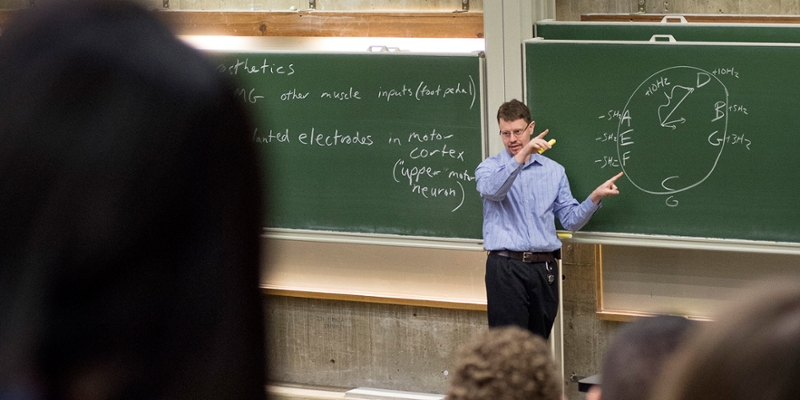Freshmen Explore Scientific Controversies

New first-year minis dive into the history of developmental biology and controversial studies in neuroscience
This spring, DJ Brasier, assistant teaching professor of biological sciences, taught two freshman seminar courses. The first mini, “Historical Perspectives on Cell and Developmental Biology”, built off of work that Brasier and Maggie Braun, MCS Associate Dean for Undergraduate Affairs, did during 2014 and 2015 for which they recently received CMU’s Teaching Innovation Award. The course had two modules. In the first module, after learning about canonical GPCR signaling through the alpha subunit of G-proteins, students see the original data that indicates, unexpectedly, that the beta/gamma subunits signal; then they see the vicious rebuttal of that result, then they see some additional experiments done on both sides of the controversy. Students evaluate the data and arguments, learn the value of careful experiments, see science as a non-linear process, and brainstorm about additional questions they have and experiments to begin to address these questions. In the second module, students work through a second paradigm shift in biology: one that unfolded over the latter half of the 20th century. Students begin by working through classic papers that lend strong support for the theory the ectoderm develops, by default, into skin and a positive signal from the mesoderm sends part of the ectoderm down a developmental path that leads to brain formation. Students then experienced cognitive dissonance as they learned of experiments done in the 1980’s and 1990’s that show an apparent default developmental trajectory of neurons for ectoderm. Students worked together to come to a revised model that accounts for all of the data as the signal from mesoderm is reimagined as inhibiting other local signals.
In the second course, “Controversies in Neuroscience”, students again worked through two modules. The first controversy discussed was the extent to which the a brain structure called the hippocampus functions as a general-purpose memory structure vs. a spatial navigation structure. Students were first introduced to historical and recent data arguing that the hippocampus is primarily a memory structure. Students then were exposed to other historical and recent data arguing that the hippocampus is better understood as a structure for spatial navigation and contextualization of experiences. The second controversy focuses around the relative impact of genetic predisposition vs. sensory experience is the connectivity of the visual system in the brain. One side of the controversy was explored in the context of historical evidence that closing an eye early in life dramatically reshapes the function and connectivity of the visual cortex. This is countered by more recent evidence by former CMU professor Justin Crowley and others that mature patterns of connectivity develop before visual experience even begins as well as some candidate genes that may influence this pre-wiring. Both controversies remain active, and recent research papers that maintain the more traditional views of the hippocampus and of visual development are explored at the end of their respective units. Finally, in both courses, students have a series of written assignments that ultimately builds to them taking a side in one of the explored controversies and proposing a new experiment that could help to resolve the debate.